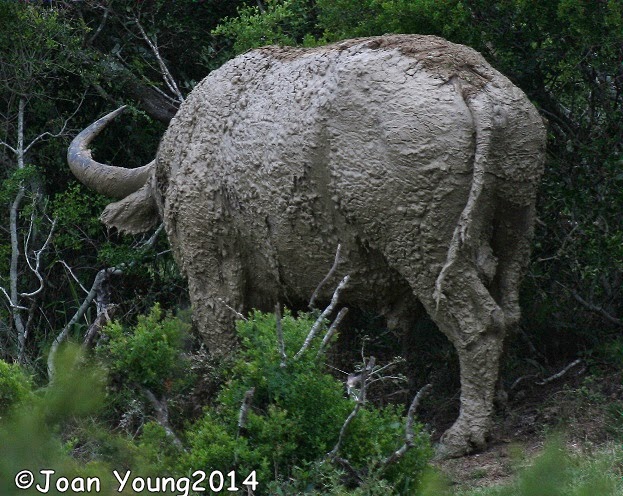These were behind glass and I had to use the camera's flash - please excuse the glare of it in the photographs.

Our world was born in a ball of burning gas 4.6-billion years ago, in a universe that is about 14-billion years old. Over time it cooled, the early atmosphere formed, and the first land masses appeared.

The first life forms, which were like the black algae you sometimes see in swimming pools today, emerged about 3.8-billion years ago.

The history of life on Earth has been rocked by five major extinctions. The last great extinction was 65-million years ago, when the dinosaurs were wiped out, probably after a giant meteor slammed into the Earth off the coast of Mexico, and set off volcanic eruptions all over the world, changing the global climate. Today, some scientists say we are in the midst of the sixth major extinction – and its cause is us.

We know about species which have populated our Earth before us by studying fossils. Fossils are the remains of plants or animals which have been turned into stone over a long period of time in a process known as “mineralisation”.

Charles Darwin, an English naturalist, was one of the first people to express a theory of evolution – the idea that species change over time, as they adapt to changing environments.
 Our world was born in a ball of burning gas 4.6-billion years ago, in a universe that is about 14-billion years old. Over time it cooled, the early atmosphere formed, and the first land masses appeared.
Our world was born in a ball of burning gas 4.6-billion years ago, in a universe that is about 14-billion years old. Over time it cooled, the early atmosphere formed, and the first land masses appeared. The first life forms, which were like the black algae you sometimes see in swimming pools today, emerged about 3.8-billion years ago.
The first life forms, which were like the black algae you sometimes see in swimming pools today, emerged about 3.8-billion years ago. The history of life on Earth has been rocked by five major extinctions. The last great extinction was 65-million years ago, when the dinosaurs were wiped out, probably after a giant meteor slammed into the Earth off the coast of Mexico, and set off volcanic eruptions all over the world, changing the global climate. Today, some scientists say we are in the midst of the sixth major extinction – and its cause is us.
The history of life on Earth has been rocked by five major extinctions. The last great extinction was 65-million years ago, when the dinosaurs were wiped out, probably after a giant meteor slammed into the Earth off the coast of Mexico, and set off volcanic eruptions all over the world, changing the global climate. Today, some scientists say we are in the midst of the sixth major extinction – and its cause is us.





























